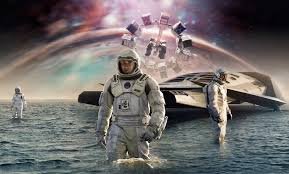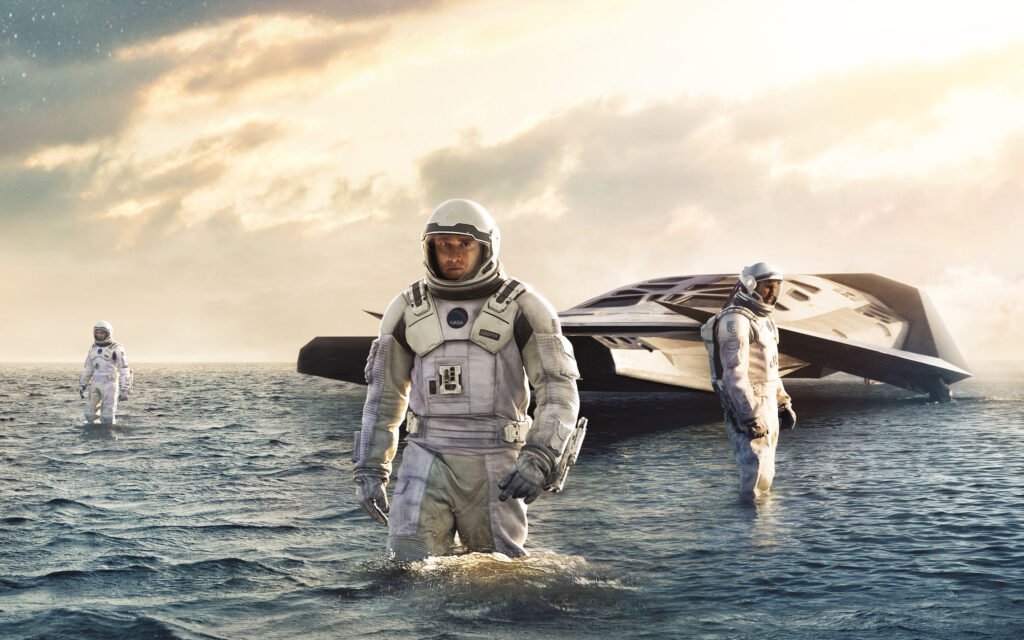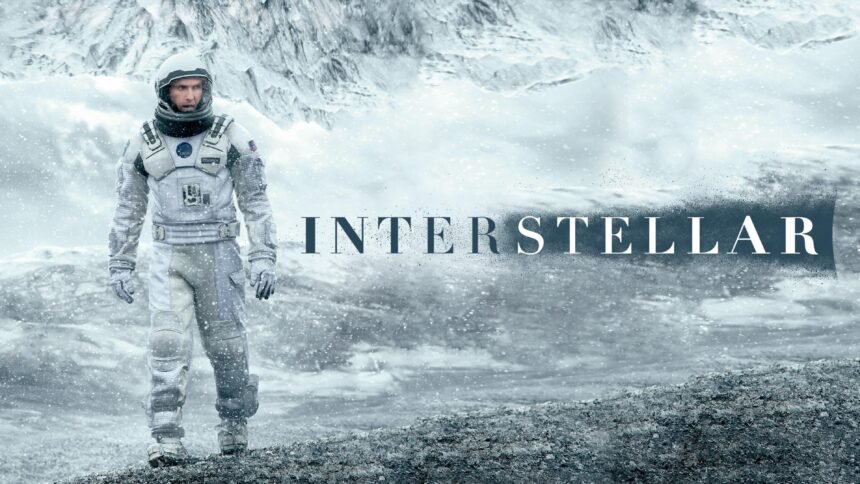Interstellar: A Journey Beyond Time and Space
1. What is Interstellar?
Discover Interstellar, a breathtaking journey through space and time that redefines science fiction. Explore its intricate plot, stunning visuals, and emotional themes in this cinematic masterpiece.
Interstellar is a 2014 epic science fiction film directed by Christopher Nolan. It explores complex themes like space exploration, time travel, and the survival of humanity. With its visually stunning sequences and mind-bending concepts, the movie pushes the boundaries of science fiction while remaining grounded in human emotions.
2. The Story of Interstellar
2.1 The Premise
Set in a future where Earth is on the brink of becoming uninhabitable, Interstellar tells the story of a group of astronauts who embark on a daring mission to find a new home for humanity. Led by Joseph Cooper, the team travels through a wormhole to explore distant galaxies, hoping to discover a planet that can sustain life.
2.2 Major Plot Points
2.2.1 The Dust Bowl
The story begins with Earth suffering from environmental disasters, most notably the Dust Bowl, which threatens humanity’s survival. Cooper, a former NASA pilot, is recruited to lead a last-chance mission to save the human race.
2.2.2 The Wormhole and Other Worlds
Cooper and his team journey through a mysterious wormhole near Saturn, discovering alien worlds. Each planet they explore presents unique challenges, from massive tidal waves to frozen landscapes, yet none seem suitable for human habitation.
2.2.3 The Fifth Dimension and the Tesseract
One of the film’s most iconic moments occurs when Cooper finds himself in a tesseract, a representation of the fifth dimension. Here, time is no longer linear, and Cooper can communicate with his daughter across different points in time, helping her save humanity.
3. History Behind Interstellar
3.1 Christopher Nolan’s Vision
Christopher Nolan, known for his intellectually stimulating and visually grand films, drew inspiration from classic sci-fi films like 2001: A Space Odyssey. He aimed to create a space epic that spoke to both the vastness of space and the intimacy of human experience.
3.2 Collaboration with Kip Thorne
The science in Interstellar was heavily influenced by physicist Kip Thorne, who worked closely with Nolan to ensure the depiction of black holes, wormholes, and time dilation was scientifically accurate. This collaboration added a layer of authenticity rarely seen in sci-fi films.

4. The Science Behind Interstellar
4.1 Black Holes and Wormholes Explained
A central feature of Interstellar is the presence of a wormhole, a theoretical passage through space-time. Black holes, particularly the massive black hole Gargantua, play a pivotal role in the film, providing visually stunning and scientifically accurate sequences based on real astrophysics theories.
4.2 Time Dilation: Fact or Fiction?
Time dilation, caused by the intense gravitational pull near a black hole, is a key scientific concept in the movie. While exaggerated for dramatic effect, it is rooted in Einstein’s theory of relativity, providing a fascinating element to the film’s plot.
5. The Cast and Roles in Interstellar
5.1 Matthew McConaughey as Cooper
Matthew McConaughey delivers a powerful performance as Joseph Cooper, a farmer-turned-astronaut. His emotional journey forms the heart of the film, making the complex scientific concepts more relatable.
5.2 Anne Hathaway as Dr. Amelia Brand
Anne Hathaway portrays Dr. Amelia Brand, a scientist who believes love can transcend space and time. Her character adds an emotional depth to the mission, making the scientific stakes feel personal.
5.3 Jessica Chastain as Murph
Jessica Chastain plays Murph, Cooper’s daughter, who grows up to become a brilliant scientist. Her role is pivotal, as her discoveries are key to saving humanity.
5.4 Supporting Cast
Notable performances by Michael Caine, Matt Damon, and John Lithgow add layers of complexity to the story, enriching the narrative and emotional core.
6. The Visual and Sound Mastery
6.1 The Cinematography
Hoyte van Hoytema’s cinematography captures the vastness of space in breathtaking detail. The portrayal of black holes, alien planets, and spacecraft contributes to the film’s status as a visual masterpiece.
6.2 The Music of Hans Zimmer
Hans Zimmer’s haunting score perfectly complements the themes of isolation, exploration, and connection. The use of organ in particular adds an ethereal quality that lingers long after the film ends.

7. Advantages of Interstellar as a Film
7.1 A Unique Blend of Science and Emotion
Few films manage to balance hard science with emotional storytelling the way Interstellar does. It tackles existential questions while grounding them in a father’s love for his children.
7.2 Educational Impact
Interstellar has sparked interest in space exploration and astrophysics, encouraging many viewers to learn more about black holes, time travel, and relativity. Its educational value is coupled with entertainment, making it a film that appeals to both casual viewers and science enthusiasts alike.
8. Conclusion
Interstellar is not just a science fiction film; it’s a reflection on human resilience, exploration, and love. By blending cutting-edge science with emotional storytelling, Christopher Nolan created a cinematic experience that continues to inspire and provoke thought.
9. Frequently Asked Questions (FAQs)
Q1. Is Interstellar based on real science?
Yes, the film’s depiction of black holes, wormholes, and time dilation is grounded in real scientific theories, particularly those explored by physicist Kip Thorne.
Q2. What themes are explored in Interstellar?
The film delves into themes of love, sacrifice, survival, and the human condition against the backdrop of space exploration.
Q3. How does time dilation affect the plot?
Time dilation creates dramatic tension as the characters age at different rates, leading to emotional and existential consequences.
Q4. Why is the Tesseract scene significant?
The Tesseract scene illustrates how love can transcend time and space, allowing Cooper to connect with his daughter across different timelines.
Q5. What makes the cinematography of Interstellar stand out?
The film’s stunning visuals of space, black holes, and alien worlds immerse viewers in a breathtaking and scientifically accurate depiction of the universe.
Q6. Who composed the music for Interstellar?
The score for Interstellar was composed by Hans Zimmer, whose work adds emotional depth to the film’s narrative.
Q7. How has Interstellar influenced public interest in space exploration?
The film has inspired many viewers to explore space science, contributing to increased interest in astrophysics and space exploration.
Q8. What awards did Interstellar win?
Interstellar received several awards, including an Academy Award for Best Visual Effects and nominations for Best Original Score.
Q9. Is there a sequel to Interstellar?
As of now, there is no official sequel to Interstellar, but its themes and impact continue to resonate with audiences worldwide.
Q10. Where can I watch Interstellar?
Interstellar is available on streaming platforms and for rent or purchase on platforms like Amazon Prime Video and iTunes.
For More Information, Visit https://filmitalks.in/
